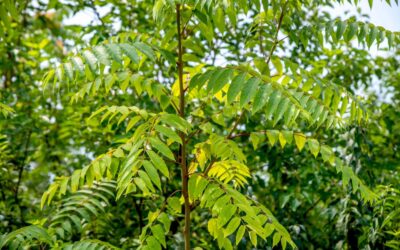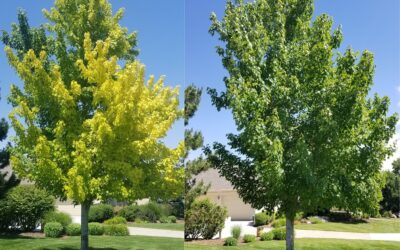At one time, commercial cherry growing was big business in Northern Colorado, with over half a million trees in production. Pie cherries like Montmorency were canned and shipped around the country. But shortages of canning equipment during World War II and devastating freezes shortly thereafter drew the business to a virtual close.
Growing fruit trees in Colorado presents plenty of challenges, to be sure. As recently as 2014-15, up to 80% of peach, plum, and cherry trees were killed by a combination of a long warm fall followed by a bitter cold snap. So does that mean you should give up trying to grow fruit trees? Not at all. New varieties are being developed to withstand our fickle climate, and planting fruit with those challenges in mind can greatly improve your chances of success. We offer some tips on how to best plant your fruit trees in Colorado below.
Choosing a Cherry Tree
In choosing a cherry tree, the first question is whether you want it for ornamental value or for its fruit. There are many varieties that are hardy enough for Colorado’s climate, but fewer that reliably produce fruit. Tart cherries like the Montmorency do best in eastern Colorado; the West Slope’s climate is better suited for sweet varieties.
The Montmorency is a very productive variety with healthy, flavorful fruit that’s ideal for jellies, jams, pies, and other baked goods. It’s a low-growing tree, 12 feet tall by 15 feet wide with attractive leaves and showy white blossoms in spring. It’s hardy to zone 4, but can be damaged or killed by severe cold.
Growing and Maintaining Cherry Trees
Cherries do best in well-drained soil that has been amended with organic matter. They should be watered weekly during growing season and fertilized with an organic fertilizer in the fall.Stop regular watering in October to encourage dormancy, but give a good drink before the first cold snap to keep the soil moist and hold heat. Pruning of up to 20% encourages new growth and fruiting.
Controlling Insects and Disease
Cherries are very popular with birds, but be careful with netting, as the birds can get caught in it.Insects and disease can be problems with any fruit tree, but are controllable with proper care. Cherry slugs are sawfly larvae that can strip leaves bare in the summer. Control them with a general purpose insecticide or dusting the leaves with wood ash.
Cherry trees are beautiful landscape accents, and if you can beat the climate, birds, and other perils, they can be sources of good, nutritious fruit. Do your research to pick the variety that best suits your wishes.
If you’re considering planting cherries or other landscape trees and shrubs, or have ones that need maintenance, Donovan Arborists offers full planting, pruning and landscaping services in the greater Denver area. We’re happy to give free estimates to homeowners and property managers for any services needed!



